Loons, lily pads, lightning. A groundhog grazing outside our tent. An engineering marvel equal to the Pyramids of Egypt and the Great Wall of China. “How long will it take?” we are asked several times each day, when people learn that we are canoeing from Kingston to Ottawa on the Rideau Canal. Three leisurely weeks is our reply, but one could easily spend an entire summer – or a lifetime – exploring this historic Canadian waterway.
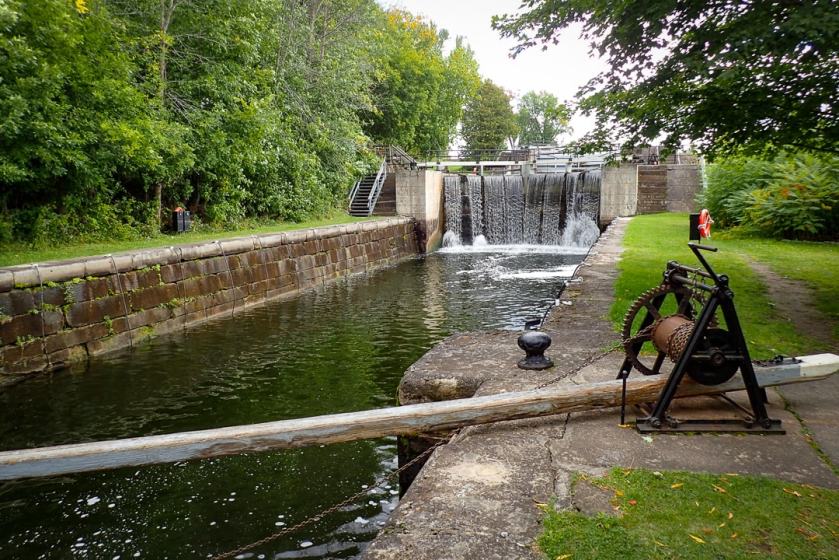
Rideau expert Ken Watson gives his top ten reasons to paddle the Rideau Canal: It’s interesting, easy, safe, accessible, quiet, decadent, photogenic, historic, friendly, fun. We can’t improve Watson’s list, but we can personalize it by using his top ten reasons as an outline for our trip report.
It’s interesting.
The Rideau grabs and holds our attention from the moment we launch into the Cataraqui River until Parliament Hill comes into view on day twenty-two. The scenery unfolds as we move through a series of marshes, rivers, lakes large and small, and narrow channels. There are birds and animals to admire. Familiar favourites like loons, herons, osprey, and turtles entertain, and we enjoy two first-sightings: a friendly groundhog grazing in our campsite and an enormous dock spider on top of our tent. The weather is interesting, too; some days we go from swimsuit to rain suit to wishing we had brought a snowsuit.
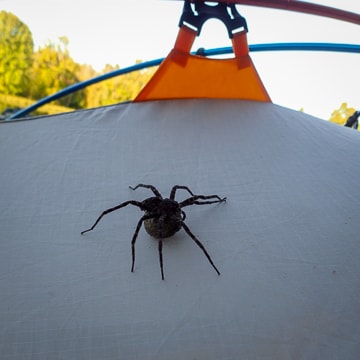



The route is flexible, especially for paddlers, who do not have to worry about channel depth. Following the marked navigation channel, it’s 202 km from Kingston to Ottawa, with forty-seven locks to pass through. With more than 1,000 kilometres of shoreline, close to three hundred islands, and side excursion possibilities, the journey can be adapted to one’s available time and interests. This trip we zigzag to Westport and up and back on the Tay Canal to historic Perth, a total of 315 km by canoe. Twenty years ago we covered even more distance, by detouring through Bedford Mills to Frontenac Provincial Park.
It’s easy.
It’s easy, but you can make it hard. This is a beginner route on a slackwater system, meaning there is no appreciable current in the rivers. There are no rapids or hidden obstacles, and no tricky manoeuvring is required – if the weather cooperates. We like easy, but if you want to make it hard, here are some suggestions:
Enter an endurance race. Twenty-three hours forty-eight minutes: the winning time for a tandem canoe in last year’s Kingston to Ottawa Paddling Race. That’s 202 kilometres in under 24 hours. Yikes!
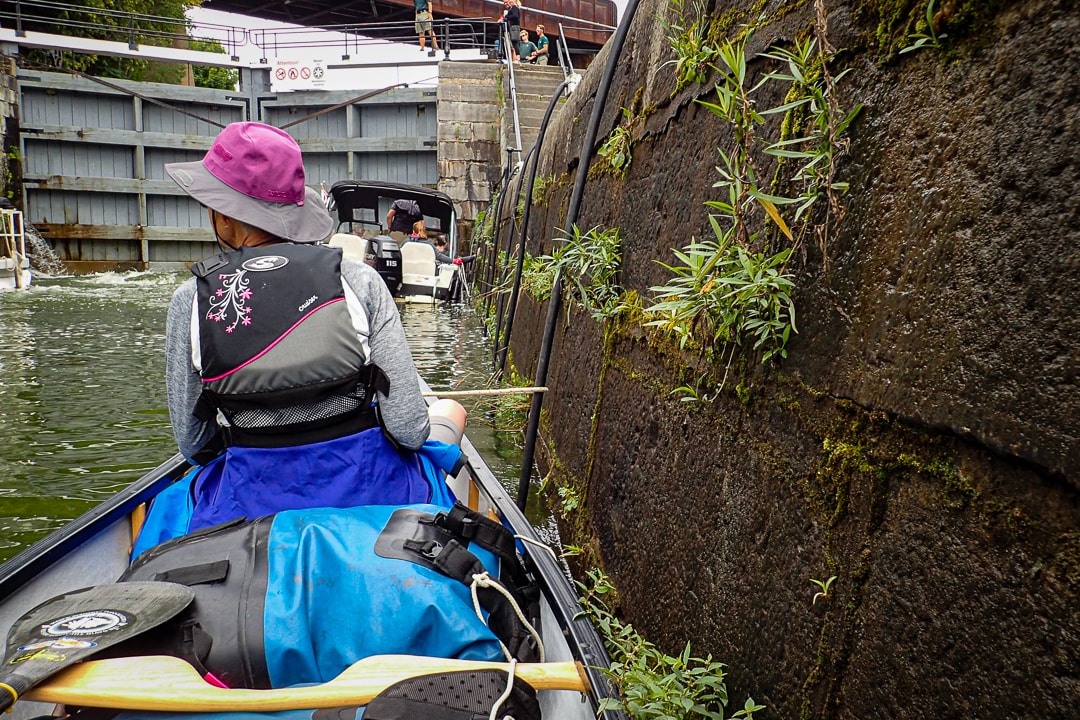
Portage all the locks. Locking through is interesting, easy, and fun, but purists are free to carry their canoe and gear across the locks. Once or twice we choose to portage, because we want an early start (lockstation hours are greatly reduced after Labour Day).
Set a tight schedule. Six to ten days is what Parks Canada suggests for paddling the Rideau Canal. Six days would be a challenge for beginners, in our opinion, especially if the weather is nasty. We choose three weeks simply because we like canoe trips of that length. There’s a rhythm and a bond with the water that takes that time to develop.
It’s safe.
As canoe trips go, this is a safe trip. You can’t get lost; numbered buoys and beacons line the navigation channel. Cell phone service is excellent. Lockstation staff and other boaters are close at hand to help. Villages along the route can provide medical services, supplies, and bail-out options.
Dangers and annoyances exist, however. A raccoon might run off with your bagels. You might see a snake, a spider, a tick, or poison ivy.



Wind, weather, waves, and wake from power boats are the biggest concerns. In three weeks we experience four thunderstorms, one microburst (an intense tarp-ripping downdraft), one night with 50 millimetres of rain, three days with winds gusting up to 65 kilometres per hour, two nights with near-freezing temperatures, and a cigarette boat under a lockmaster’s caution for speeding. Sunny days with calm or favourable winds are the norm, however, as our photos show.
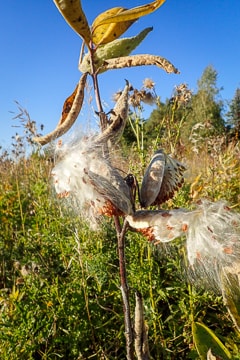
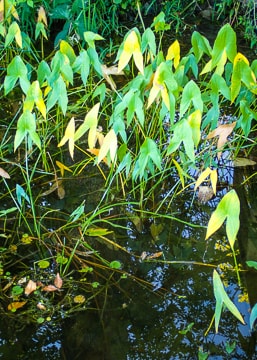


Aquatic weeds are a danger to propeller-driven boats, but weeds are a paddler’s friend, as they provide a place to rest, and escape wind and wake. The weedy zone is the no-wake canoe-cruising zone.
It’s accessible.
The Rideau Canal is accessible to almost everyone, physically and financially. The endpoints, Kingston and Ottawa, can be reached by road, rail, and air. Canoes, kayaks, and houseboats can be rented. For the landlubbers, there are routes for driving tours, cycling tours, and picnic tours. There are no fees to visit a lock station, and many people stop by to watch boats, to fish, to picnic, to walk their dogs.

To make the Rideau more accessible to paddlers, Parks Canada offers a fifty percent discount on seasonal lockage permits for canoes and kayaks ($4.40 per foot, which is $70.40 for a 16-foot canoe), and paddling docks have been installed at the lockstations. These lower platforms are handy for kayakers, who often have trouble getting in and out of their kayaks at the regular mooring walls. Us, we prefer the regular moorings, because we like their sturdy cleats and bollards, but we use the paddling docks to show our appreciation for Parks Canada’s thought.
It’s quiet.
It’s quiet, much of the time. The swish of the paddle, the call of the loon, the plop of the turtle, the chirp of the osprey: these are the only sounds we hear for hours, sometimes days, at a time.
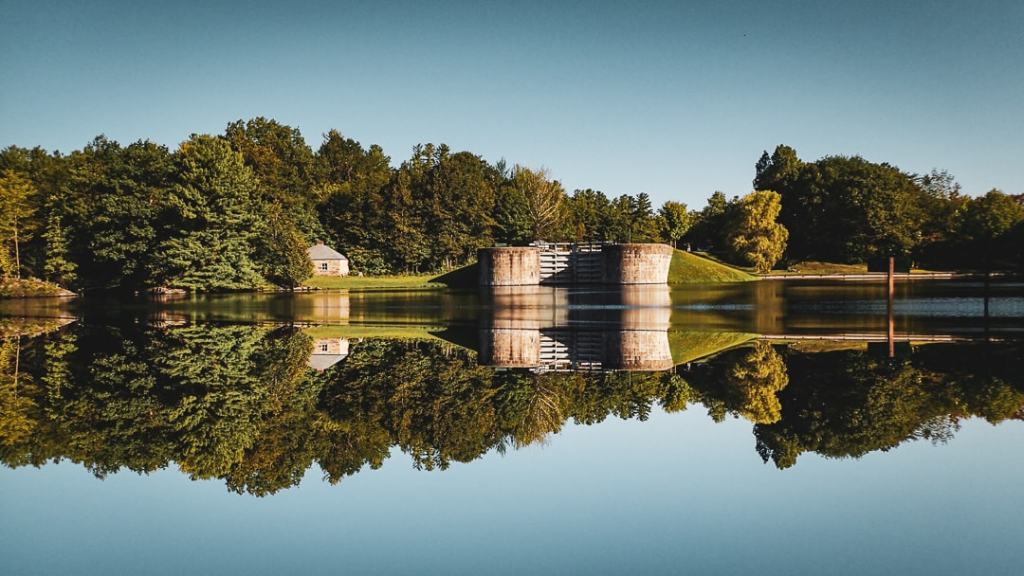
This is not a full-on wilderness trip, however. We pass through cottage country, villages, towns, and right into downtown Ottawa. Traffic grumbles, trains rumble and whistle, lawnmowers hum, dogs bark, houseboats gurgle, powerboats groan or roar. We love a working waterway – we live in one, in Victoria. If you are seeking enduring peace and solitude, choose a quiet section rather than the whole route.
It’s decadent.
If there are flush toilets and ice cream, is it still camping? The Rideau is a decadent canoe route, and you can make it more or less so.
Lockstation camping is the practical, affordable choice for paddlers, and it meets our criteria for decadence: a level, grassy spot to pitch a tent, flush toilets, potable water, picnic tables, and garbage cans. Three of the twenty-four lockstations have showers! If you want to cook, bring your own food and camp at one of the more isolated lockstations such as Davis, Poonamalie, or Kilmarnock. To up the decadence, stay at a busy lockstation such as Chaffeys, where you can walk to an elegant restaurant or a 1950s-style ice cream parlour.
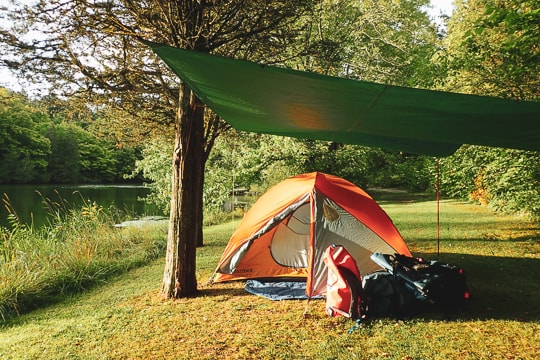
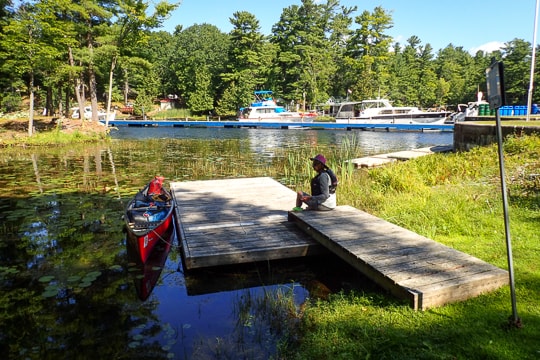
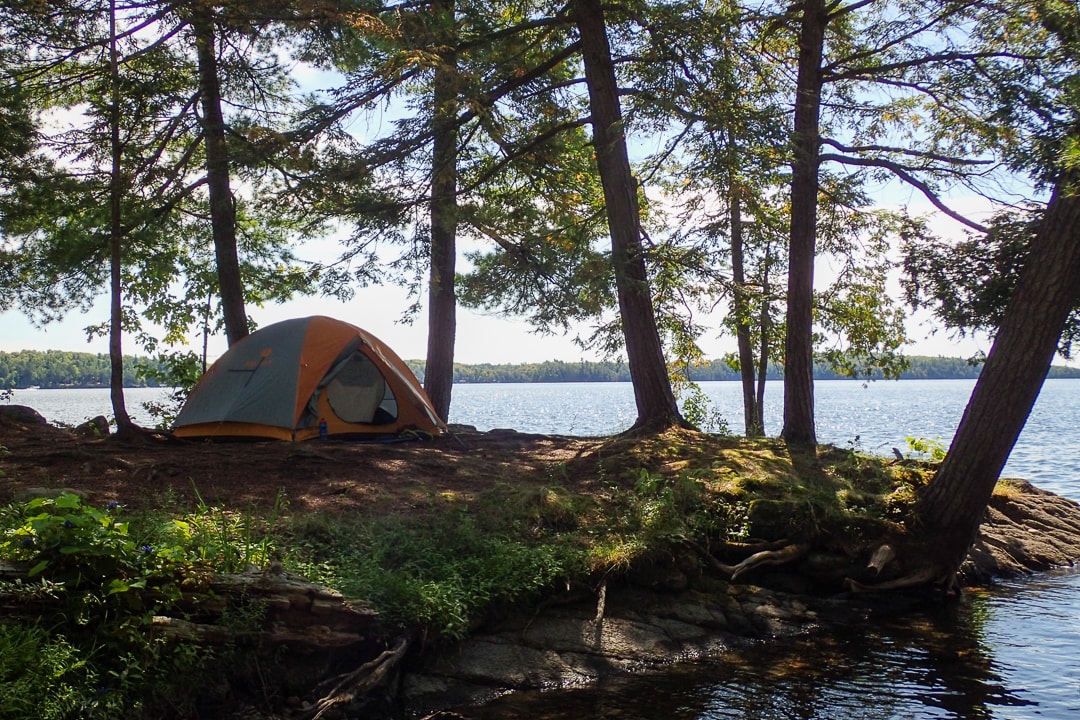
Tired of decadence? Paddle in to a backcountry site at Murphy’s Point or Frontenac Provincial Park – just you, the loons, the raccoons, and a pit latrine. On reflection, Murphy’s Point is almost decadent; toilet paper is provided in the outhouse, and if you paddle then hike into the car campground, you will find showers, a laundry, and ice cream.
It’s photogenic.
We take more than four hundred photos on this trip. The back of Cathy’s pfd is in the foreground of most, but the backgrounds show variety. Other people take photos of us, too. “How long will it take?” is our most frequently-asked question, when people find out that we are canoeing from Kingston to Ottawa. This is a change from our previous Rideau trip twenty years ago, when we were most frequently asked “don’t you get hot wearing those life jackets?”
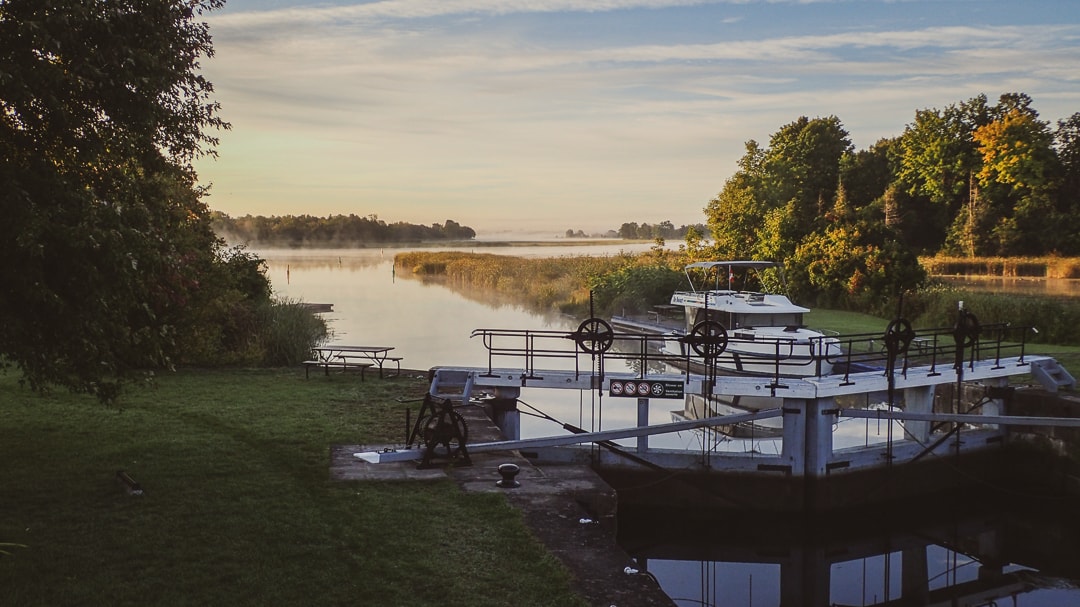
It’s historic.
It’s a living, working, Canadian historic monument.
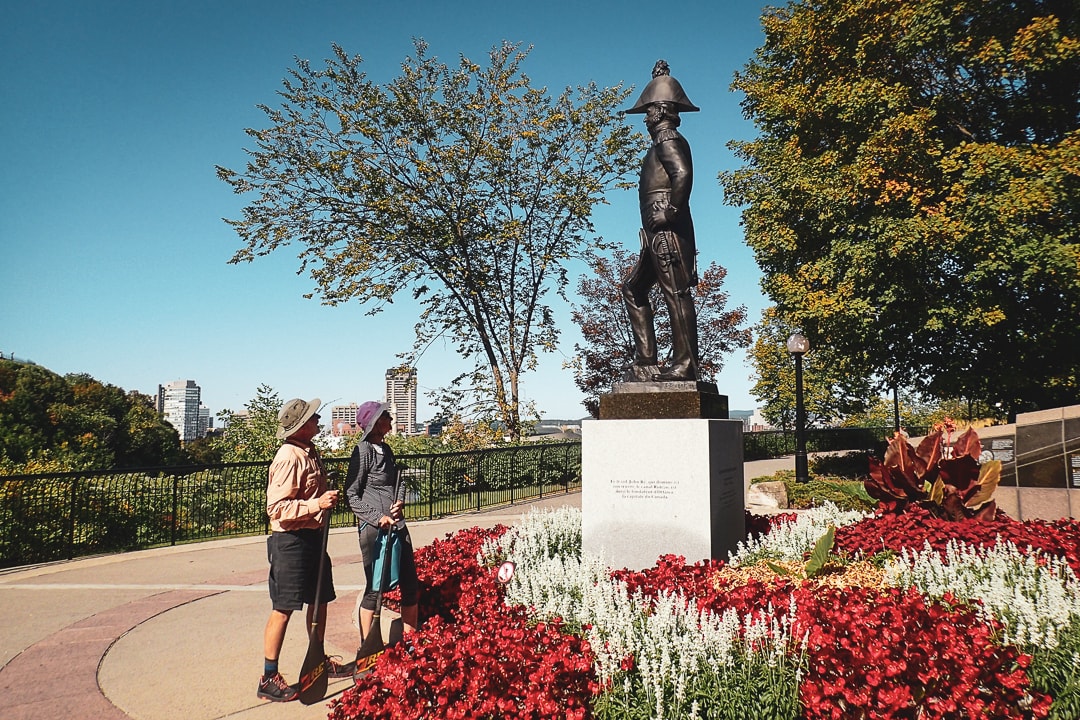
The Rideau Canal stretches between Kingston, Canada’s first capital, and Ottawa, Canada’s capital since 1857. Parks Canada maintains and operates the Canal, with most locks still operated by hand using the same mechanisms as in 1832 when the canal opened.
Considered one of the greatest engineering feats of the 19th century, the Rideau Canal has been designated a National Historic Site of Canada, a Canadian Heritage River, and a UNESCO World Heritage Site. Colonel By Day, held on the holiday Monday in August, celebrates Lieutenant Colonel John By, the military engineer who supervised construction of the Canal.
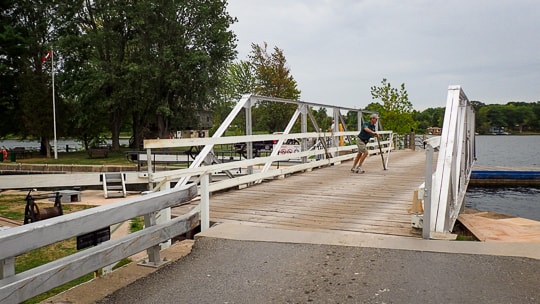

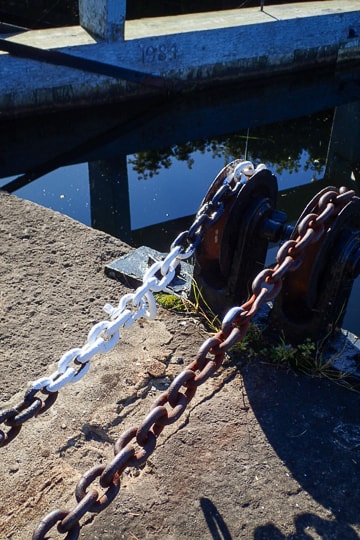
It’s friendly.
On a recreational canal, we expect boaters to be friendly, and they are. We are surprised, though, by the friendliness of the local people we meet along the way.
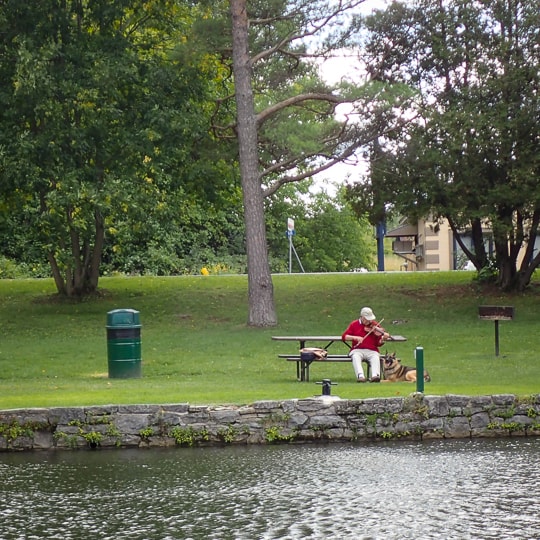

“That’s what we do in Perth,” says the kind fellow who drives Doug to Canadian Tire for a bottle of camp stove fuel, because he thinks it’s too far for us old folks to walk. “Would you like a coffee?” a young man asks, as we wait on the blue line at Black Rapids. Coffee gratefully received, he brings us a bag of bagels and a plate of fruit and cheese. His family picnic is wrapping up, and he’s happy to share. “Hello! Hello! You are welcome to rest at our dock!” a cottager calls to us on a very windy day. We are fine, making slow but steady progress into the wind, but we are touched at her concern for us.
Boaters are friendly, and teasing is part of the conversation. Houseboats are called wall-bangers, a boat doing its first lockage is a virgin, canoes are speed bumps. Our fender gets a lot of teasing, as in “that’s the cutest little fender I’ve ever seen.”
It’s fun.
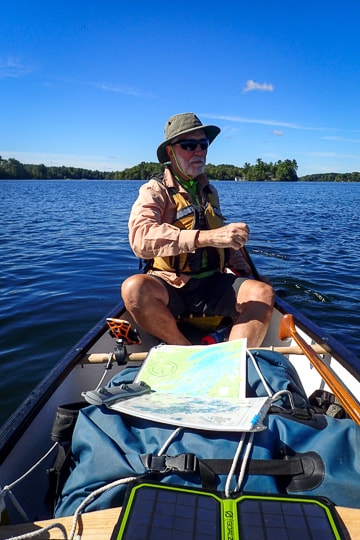
Fun is subjective, but the Rideau meets our definition. Doug, who likes to see how things work, is fascinated by the engineering of the locks, bridges, and canals. He also enjoys playing with his latest gadget, a Goal Zero solar charger. For Cathy, fun is the actual canoeing, the teamwork and communication that comes with a multi-day canoe trip.
Twenty years later
Twenty years ago, three years before we retired, we canoed the Rideau Canal. How have we and the Rideau changed?
What’s different?
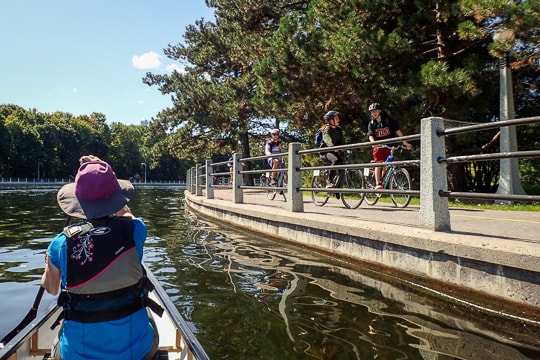
A big flock of swans now inhabits Colonel By Lake, Canada geese have invaded a stretch of the Rideau River, and cyclists greatly outnumber paddlers in Ottawa.
The serenades at Jones Falls have ended. The accordion-playing lockmaster passed away. The current lock master is very pleasant, but he doesn’t play or sing This Land is Your Land.
Some of the lockstations look more rundown, and a few of the lockmasters seem overworked. Budget cuts have taken a toll.

The Hershey chocolate factory has closed and been replaced with a large cannabis operation called Tweed. The Tweed visitor centre provides an informative tour, but unlike the Hershey tours, there are no free samples.
What’s the same?
Our paddling speed. We still cruise at about five kilometres per hour, just as we did twenty years ago. We are a bit slower at crawling in and out of the tent, though.

Lockmasters are knowledgeable, patient, and kind. Canoes and luxury yachts are treated with equal care and respect.
The route seems under-utilized. We meet a few canoes and kayaks doing day or weekend trips, but no one doing the entire route. How many canoes travel Kingston-Ottawa or Ottawa-Kingston each year? We ask a few lockmasters, and their estimates range from twenty to forty-five. Perhaps the Rideau is too tame for hard-core canoe-trippers, too daunting for beginners? Us, we find it just right.
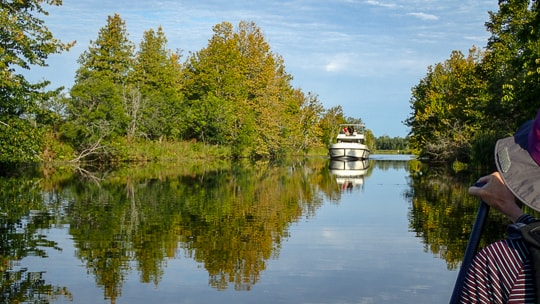

Power boaters feel sorry for us because we travel by canoe and sleep in a tent. Surely we aspire to a cabin cruiser or at least a rented houseboat? In fact, a canoe is our boat of choice. We like being self-propelled, gliding through the lily pads where propellers can’t go. The vulnerability of canoe-tripping isn’t always pleasant, but it certainly enhances our connection to the waterway. Powerboat, houseboat, tour boat, canoe, kayak, bicycle, car: isn’t it great that there are so many different ways to enjoy this Canadian heritage route?
If you go
Start your research here: http://www.rideau-info.com. For twenty-three years Ken Watson has been providing people with information about the heritage and environment of the Rideau Canal through his books, his volunteer work, and his website.
Canoes can be rented from Ahoy Rentals in Kingston. Ahoy offers a shuttle service, with pick up and drop off at most lock stations from Kingston to Ottawa. Andrew, the owner, is knowledgeable, efficient, and safety-conscious.

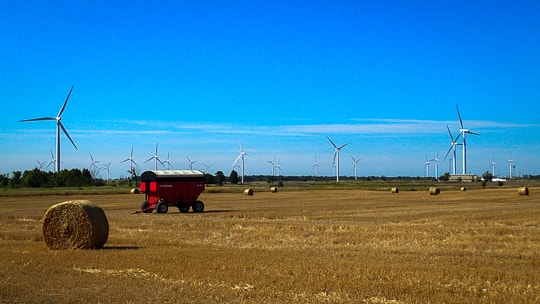
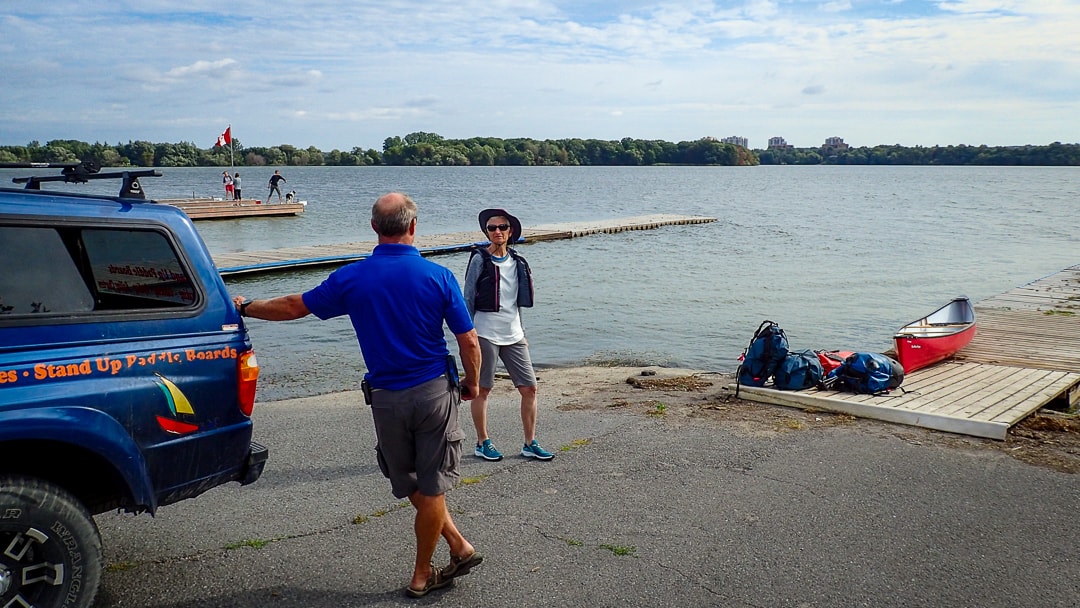
If you have an extra day in Kingston, Ahoy also rents bicycles and provides maps for touring Wolfe Island, a friendly, mostly-level island with lots of windmills.
If you are flying with your own paddles and/or used camp stove, check your airline’s regulations regarding packaging and check-in procedures. Victoria friends, you are welcome to borrow our newly-acquired hard-sided paddle case.
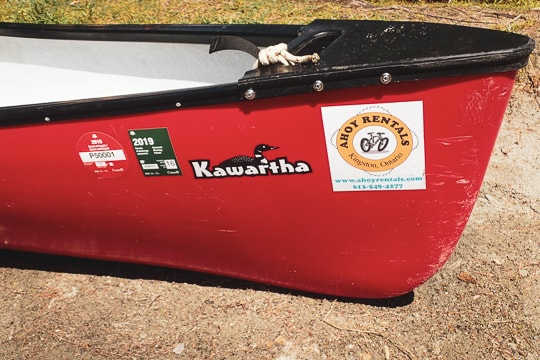
If you will be camping at lock stations for more than two weeks or you don’t want to bother with paying by the night ($4.90 per person, $$9.80 per couple), consider purchasing a seasonal mooring permit ($9.80 per foot, $156.80 for a sixteen-foot canoe). A seasonal mooring permit entitles you to one camping space.
A small fender is useful for protecting your canoe inside the locks and at mooring walls. Bring a boat sponge, for cleaning your canoe and for washing picnic tables.
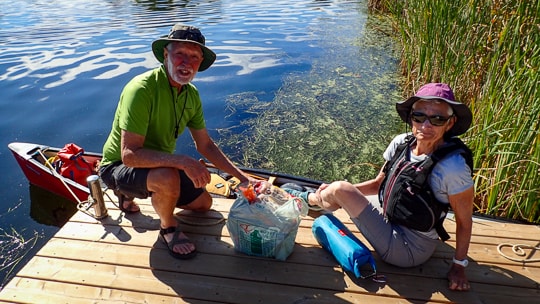
Pay attention to the re-supply points (Seeley’s Bay, Westport, Perth, Smiths Falls, Merrickville). In between, the term groceries sometimes means worms, minnows, and ice.
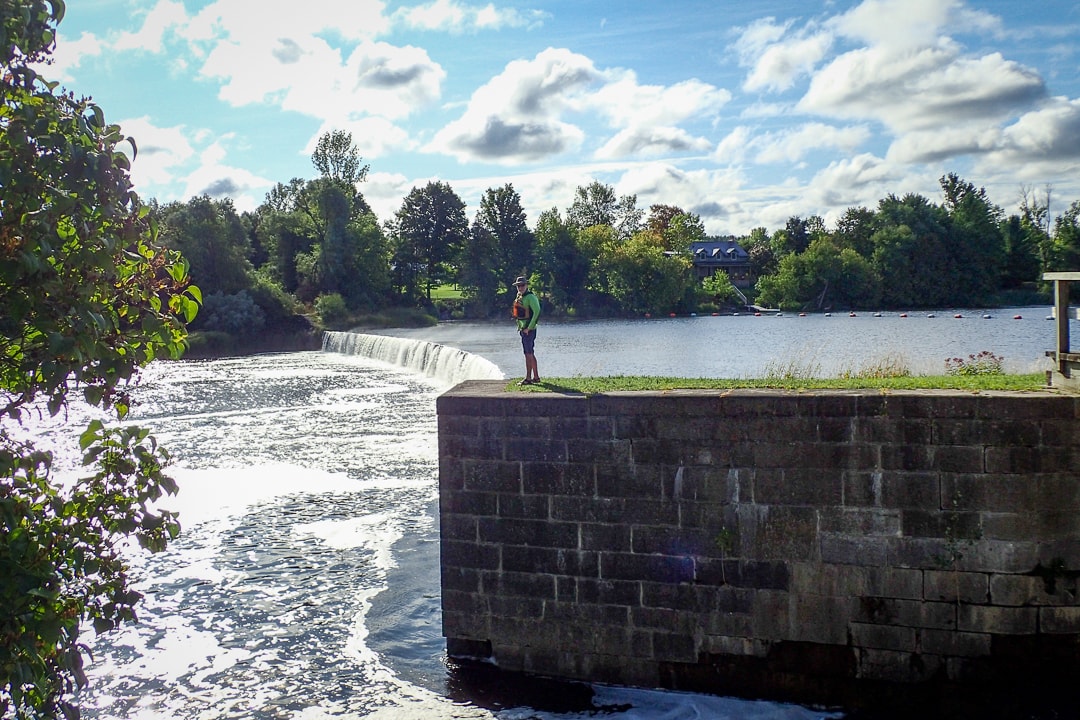


Another wonderful journey for you two. Your story and list of place names brought back memories from the late ’70s and early ’80s, when I and then-husband motored our unmasted sailboat up and down the Rideau Canal. Your canoe trip sounds like something even I could do. Maybe I will someday. I will refer to this report when I do. Lovely pics, as ever. Glad to scroll back and see the wee fender in one photo. 😉
Greetings from Guernsey,
Laura
LikeLike
Thanks as always, Laura. Happy you discovered the wee fender. Did you notice our new blog layout? It’s supposed to look better on tablets and mobile phones.
LikeLike
I was reading on my laptop, so, sorry, didn’t notice the new layout. Well done, as always.
L
LikeLike